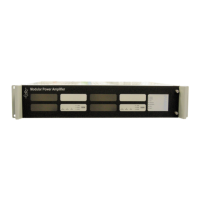iPAM400 – Product Manual
U-0629-0171.doc – Issue: 04 complete, approved
Page 12 of 138
2.1.2.2 Audio Broadcasts
2.1.2.2.1 PC/DVA (PC based Digital Voice Announcer)
The iPAM400 has built-in PC/DVA functions which use internally stored pre-recorded complete DVA
messages, or message fragments which are assembled into complete messages under the control of a
Customer Information System (CIS).
A full third-party OEM API can be provided which allows both immediate and scheduled announcements on
the unit to be triggered from a CIS system. Please contact ASL for details of the API and associated SDKs.
2.1.2.2.2 Local Paging Microphone
The iPAM400 provides two balanced audio inputs which are fully compatible with all ASL paging
microphones. Microphones which are connected to either of these inputs can be configured to selectively
page any combination of zones from the local iPAM400, or on other VIPA units across the network.
The priority of these microphones is configurable to be higher, the same, or lower than the IP derived
broadcasts at each VIPA unit.
2.1.2.2.3 Local Paging from Other Equipment
The two audio inputs and the additional input on the optional Audio Expansion Module can be used to
provide audio broadcasts from other equipment, third-party microphones, and PC/DVA, CIS or LLPA (Long
Line PA) systems.
2.1.2.2.4 OGG File Playback
The iPAM400 can receive an OGG Vorbis encoded audio file with sampling frequency from 22 kHz to 48 kHz,
decompress it at 10 x real-time speed, and play it into any combination of amplifiers.
2.1.2.2.5 Text-to-Speech Broadcasts
The iPAM400 can optionally perform text-to-speech broadcasts from free format typed-in text input using
Acapela text-to-speech processing software, which uses the English (UK) ‘Rachael’ voice as standard.
2.1.2.3 Audio Signal Processing
The iPAM400 provides a 3-band parametric equaliser featuring high and low shelving (with adjustable
frequency and slope) and a sweep-able mid band (with adjustable Q).
2.1.2.4 Timing
When used with a number of other VIPA units the system time is synchronised by use of the NTP (Network
Timing Protocol). This enables synchronised broadcasts to be made across the network, for instance by
multiple VIPA units broadcasting across a single site.
The master NTP clock can be an external unit or can be defined as one of the VIPA units in the network.
The iPAM400 has a Real Time Clock (RTC) which can be configured during commissioning.
Time delays can be programmed between multiple amplifiers used to broadcast to a single zone. This
enables tuning of the system acoustics where banks of speakers are located at different distances from the
audience, e.g. with zones with ceiling mounted speakers located on combined low canopies and high roofs.

